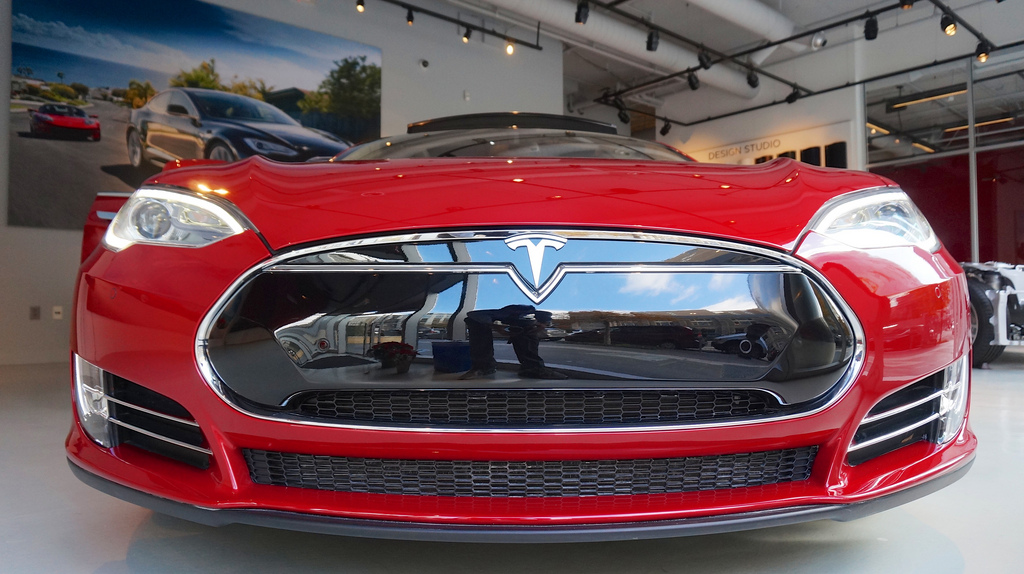From pv magazine global
If the electric vehicle (EV) industry can drive advances in battery energy density and drastically improve charging rates, as many as eight in every ten cars sold could be fully electric in ten years’ time, according to analyst Wood Mackenzie.
The U.S.-owned business intelligence firm said yesterday its base case scenario for EV adoption would see fully electric vehicles account for just 14% of sales in 2030, up from 3% last year.
However, WoodMac principal analyst Ram Chandrasekaran said that figure could rise to 30-40% if energy density and charging issues can be addressed, or even 70-80% if on-the-move charging makes strides in the next decade.
Energy density
Chandrasekaran said the Tesla Model 3 features “one of the most advanced battery packs in the automotive industry” with an energy density of 160 Wh/kg, ensuring the pack makes up around a quarter of the vehicle’s weight, at around 480kg. The WoodMac analyst predicted lithium-ion battery energy density will rise 25-35% by 2030, with the potential for alternative chemistries to supply further advances.
That would constitute half the battle as far as mass-market EV adoption was concerned, said the analyst, with a need to ramp up charging rates the other part of the equation.
The WoodMac analyst said direct current fast chargers typically charge at a rate of 50 kW at present, meaning they can supply 40 miles of range in around ten minutes. By comparison, home chargers operate at a rate of around 2.5 kW but petrol and diesel pumped at a gas station operates at an effective rate of around 20 MW.
Charging rate
To be able to supply the 200-mile range the WoodMac analyst says would be required to support long journeys in ten minutes would call for the charging rate to rise to around 300 kW and for a network of such facilities to be installed along highways worldwide. That prediction, though, ignores the fact the vast majority of private car journey round trips account for less than 40 miles.
WoodMac’s Chandrasekaran described the development of dynamic electric vehicle charging as a potential “game-changer” for EV adoption, given a raised ability for cars to charge while in motion would further reduce battery pack weight and address range anxiety.
The analyst’s base case scenario predicted EVs will drive 69% of global lithium demand by 2030 and 49% of cobalt consumption, even without the innovations necessary to catapult electric vehicles into being the technology of choice by that stage. According to the analyst, business-as-usual will see full hybrids supply 4-9% of vehicles sold in ten years’ time although conventional, fossil-fuel-burning cars will still dominate, with 66% of the market, down from 79% last year.
Raw material sourcing
As part of pv magazine’s global UP sustainability initiative, we are focusing on raw material sourcing in the energy storage industry this quarter. You can look forward to reading about lithium extraction in Chile, cobalt from the Congo and the development of raw material recycling. Contactup@pv-magazine.com for more information or to jump on board!
This content is protected by copyright and may not be reused. If you want to cooperate with us and would like to reuse some of our content, please contact: editors@pv-magazine.com.









1 comment
By submitting this form you agree to pv magazine using your data for the purposes of publishing your comment.
Your personal data will only be disclosed or otherwise transmitted to third parties for the purposes of spam filtering or if this is necessary for technical maintenance of the website. Any other transfer to third parties will not take place unless this is justified on the basis of applicable data protection regulations or if pv magazine is legally obliged to do so.
You may revoke this consent at any time with effect for the future, in which case your personal data will be deleted immediately. Otherwise, your data will be deleted if pv magazine has processed your request or the purpose of data storage is fulfilled.
Further information on data privacy can be found in our Data Protection Policy.